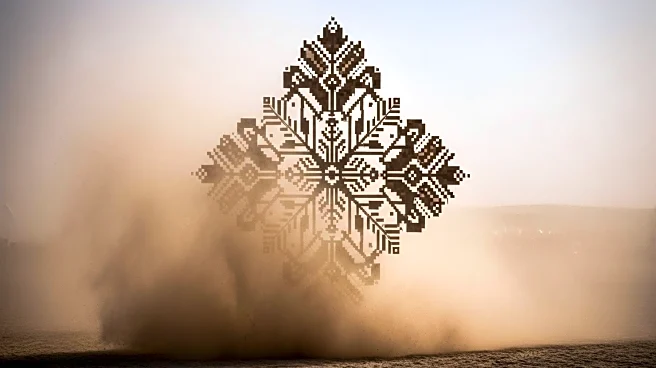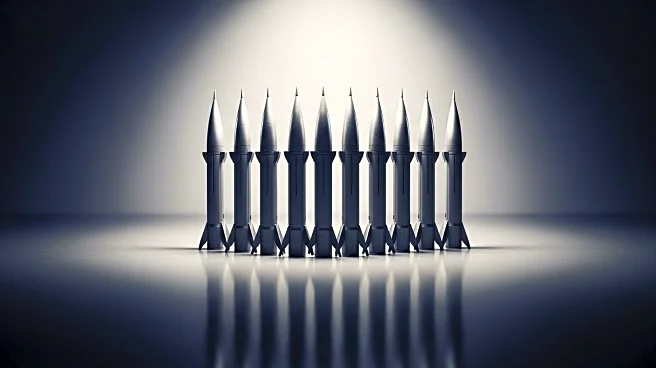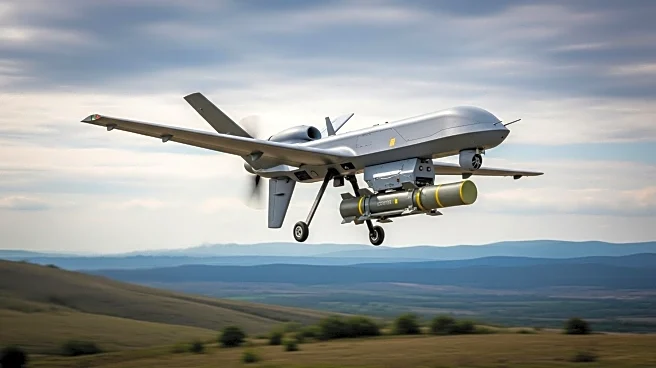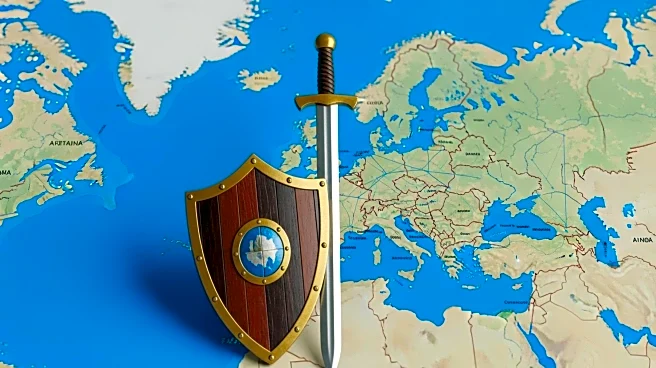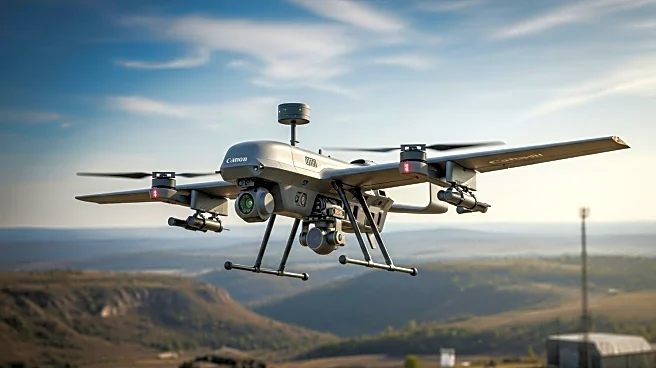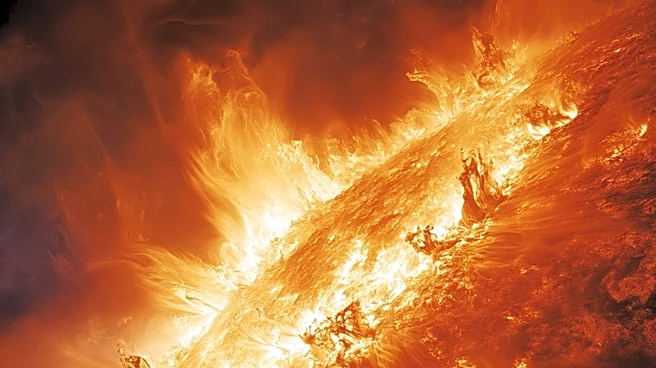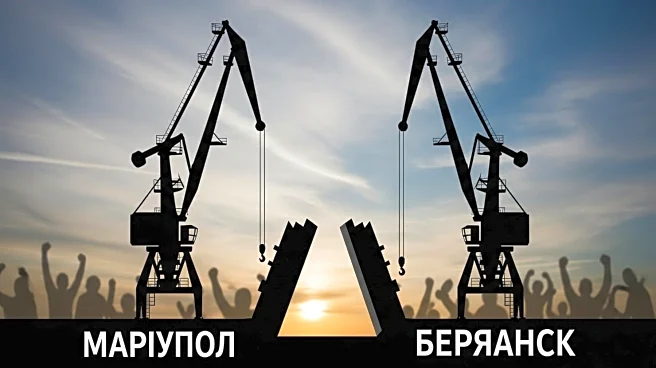What's Happening?
The Ukrainian installation 'Black Cloud' at the Burning Man festival in Nevada was destroyed by a hurricane-force dust storm on August 24. The installation, created by artist Oleksiy Sai, was a 100ft-tall inflatable sculpture composed of 45 interconnected forms, filled with 90,000 cubic feet of air. It featured strobe lights and a soundscape of missiles and explosions, designed by DJ Tapolsky. The destruction coincided with Ukrainian Independence Day, adding symbolic significance to the event. The installation was intended to travel to Europe, supported by Ukraine's Ministry of Foreign Affairs, to highlight the ongoing conflict in Ukraine.
Why It's Important?
The destruction of 'Black Cloud' underscores the vulnerability of cultural expressions to environmental factors, while also highlighting the global impact of the Ukrainian conflict. The installation was meant to convey a message of impending global challenges, resonating with audiences beyond Ukraine. Its loss at Burning Man reflects broader environmental challenges that can affect cultural events worldwide. The incident also emphasizes the role of art in communicating complex geopolitical issues, offering a poignant reminder of the ongoing war in Ukraine and its cultural ramifications.
What's Next?
The Ukrainian Institute plans to rebuild 'Black Cloud' and continue its European tour, aiming to bring attention to the conflict in Ukraine through art. The installation's message of unseen dangers remains relevant, and its reconstruction will allow it to fulfill its intended purpose of raising awareness. The event may prompt discussions on the resilience of cultural projects in the face of environmental challenges, and the importance of supporting artistic endeavors that address global issues.
Beyond the Headlines
The destruction of 'Black Cloud' at Burning Man highlights the intersection of art, politics, and environmental challenges. It raises questions about the sustainability of large-scale art installations in unpredictable environments and the role of cultural diplomacy in conflict zones. The installation's message of global conflict resonates with broader themes of peace and resilience, offering a unique perspective on the power of art to influence public discourse.
